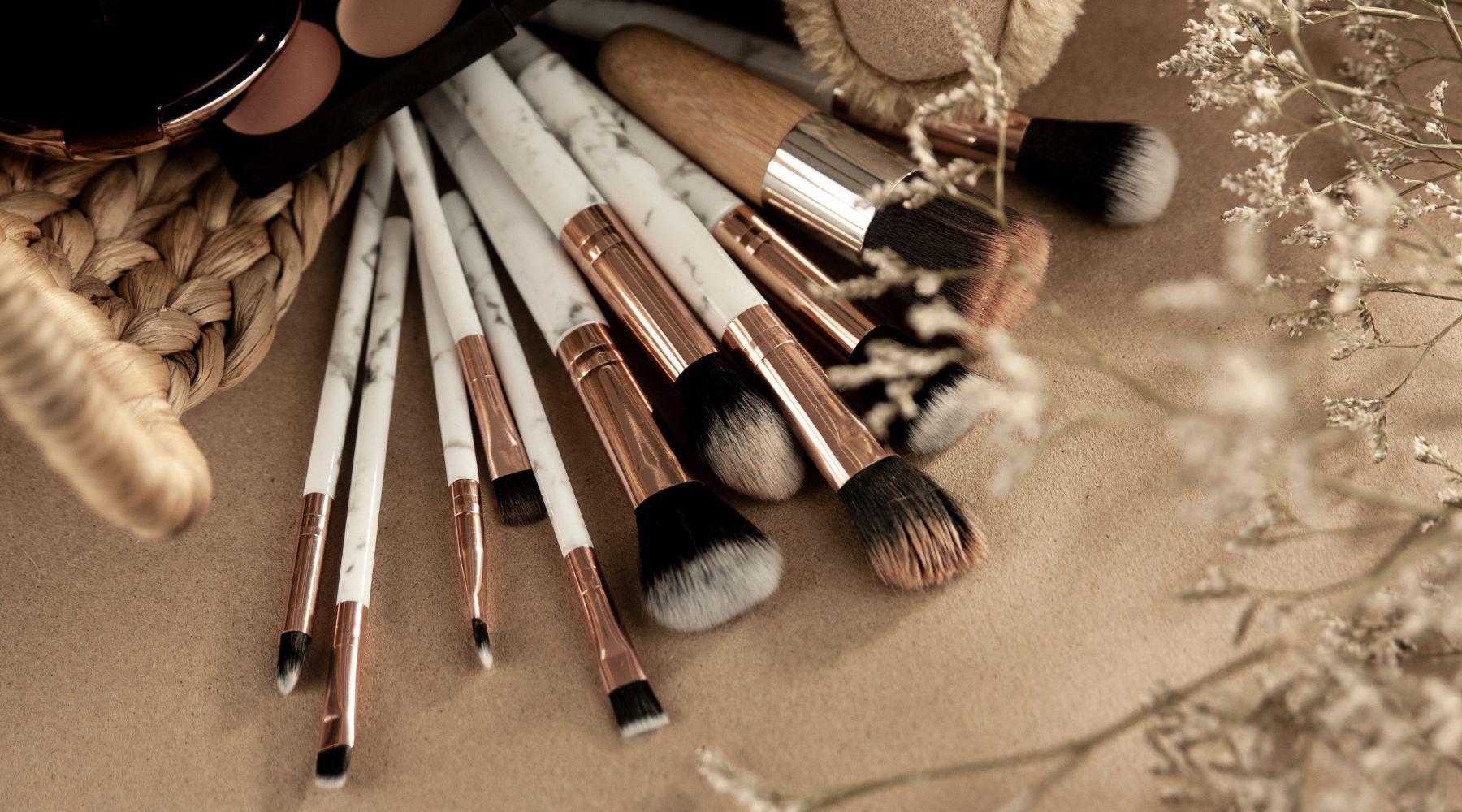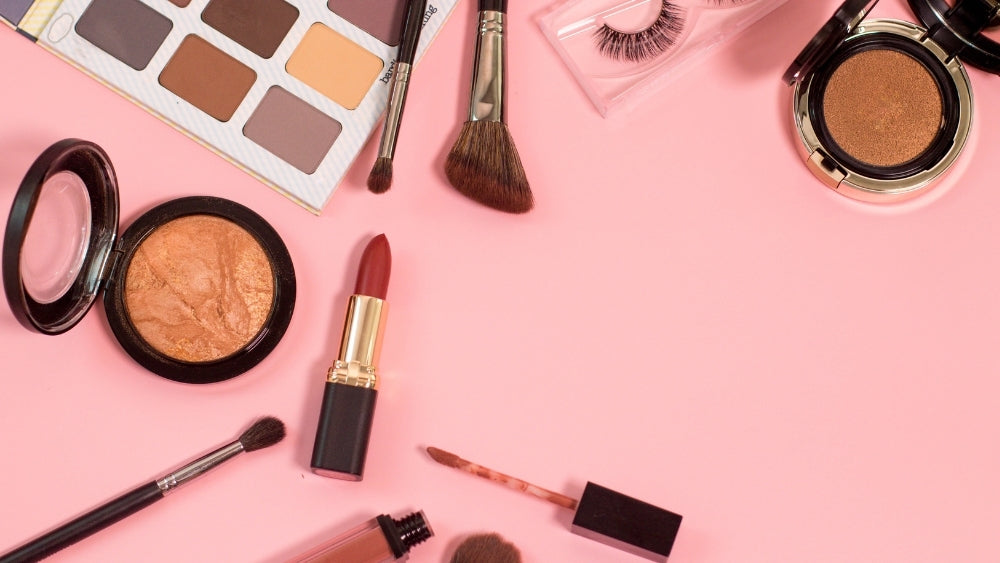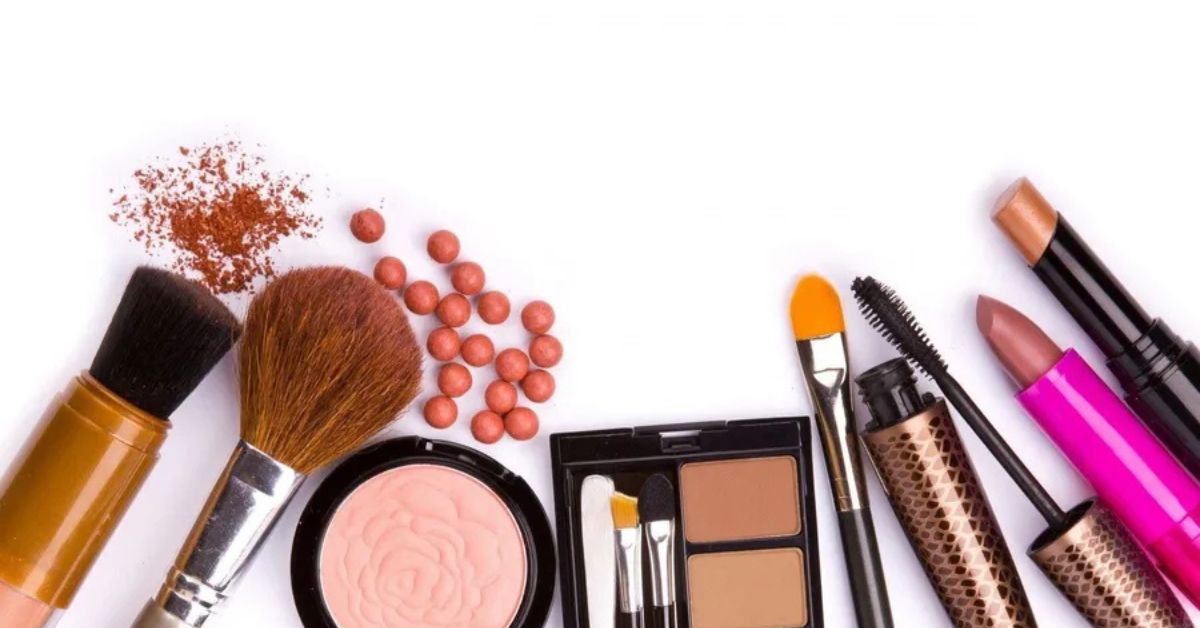Cómo limpiar brochas de maquillaje: guía completa con consejos de expertos y experiencias de usuarios

Las brochas de maquillaje son esenciales en nuestras rutinas de belleza y es fundamental mantenerlas limpias. Sin embargo, muchas personas no saben cómo limpiarlas correctamente, lo cual es un grave error. Nunca descuides la limpieza de tus brochas, ya sea para ti o para tus clientes.
¿Por qué debes limpiar tus brochas de maquillaje?
La razón más obvia es que las brochas de maquillaje también se ensucian, y cualquier cosa que se ensucie necesita limpieza. Después de usarlas, pueden acumular bacterias o suciedad en la cara, que no deberían quedar en ellas si quieres volver a usarlas. Las brochas de maquillaje sucias pueden dañar la piel y causar mucho más daño que un simple brote o irritación.
Aquí hay algunas razones más para limpiar tus pinceles:
- No limpiar tu kit de maquillaje con regularidad afecta la calidad de la aplicación y la difuminación de los productos. Puedes tener las mejores brochas del mundo, pero si están sucias y llenas de producto acumulado, no conseguirás el look y la aplicación impecables que deseas. La acumulación de producto puede afectar la forma de la brocha, así como su capacidad para recoger y fijar el pigmento y, por supuesto, su correcta difuminación.
- Prolonga la vida útil de tus brochas y la inversión que has hecho. Invertir en brochas de maquillaje es como invertir en un buen juego de cuchillos de cocina o pinceles si eres artista. Cuidar tus herramientas ayudará a que duren más y protegerá tu inversión mientras sigues obteniendo buenos resultados.
- Las brochas de maquillaje sucias pueden contaminar fácilmente tus productos de maquillaje y transferir bacterias, patógenos y otras impurezas que mencionamos anteriormente. Al limpiar tus brochas con regularidad, también cuidas los productos que usas a diario.
Aquí tienes una guía completa paso a paso para limpiar pinceles de maquillaje basada en métodos de expertos y experiencias compartidas de varias personas que he compartido justo después de la guía:
Paso 1: Reúne tus materiales
Jabón/Limpiador: Elige un producto según tus preferencias:
- Jabones orgánicos como Savon De Marseille (jabón de aceite de oliva) (Tom Pecheux)
- Champú para bebés (Johnson & Johnson) o jabón para platos (Dawn) para limpieza general (Beau Nelson)
- Limpiador sólido Beauty Blender (Beau Nelson)
- Jabón en barra (Dove, Zote Soap) o limpiadores líquidos para pinceles (Dr. Bronner's, Parian Spirit)
- Limpiadores especializados como el jabón de carbón Beauty Blender, el limpiador de brochas Lavish o el champú Rahua (Gucci Westman)
- Agua: Preferiblemente agua tibia para una mejor experiencia de limpieza.
-
Materiales de secado:
- Toallas limpias (toallas de cocina Norwex, toallas de papel)
- Una centrifugadora para un secado más rápido (método de limpieza profunda con centrifugadora)
-
Opcional: aceite de coco, aceite de oliva (para un acondicionamiento adicional) o aceite de árbol de té (para beneficios antisépticos).
Paso 2: Prepare el pincel y el espacio de trabajo
- Enjuague las brochas: Humedezca suavemente las cerdas con agua tibia. Evite mojar el mango, ya que el agua puede debilitar el pegamento.
-
Preparación: Coloque una toalla limpia o toallas de papel donde colocará los cepillos después de limpiarlos. Si usa una centrifugadora, téngala lista para usar.
Paso 3: Limpieza de los pinceles
-
Limpieza rápida:
- Si necesita una limpieza rápida, use un aerosol limpiador de brochas de maquillaje (por ejemplo, Mary Kay Brush Cleaner) y una toalla desmaquillante para obtener resultados rápidos, especialmente cuando está de viaje (experiencia del usuario compartida en Reddit).
- Si necesita una limpieza rápida, use un aerosol limpiador de brochas de maquillaje (por ejemplo, Mary Kay Brush Cleaner) y una toalla desmaquillante para obtener resultados rápidos, especialmente cuando está de viaje (experiencia del usuario compartida en Reddit).
-
Limpieza de manos:
- Sumerja el cepillo: coloque una pequeña cantidad del limpiador elegido (jabón líquido o en barra) en un plato poco profundo o en la palma de la mano.
-
Gire el cepillo: Gire el cepillo en el limpiador, masajeando suavemente las cerdas. Para suciedad más resistente, frote el cepillo directamente sobre una almohadilla o tapete de silicona (por ejemplo, el guante limpiador de cepillos Sigma Beauty Spa o el tapete de silicona y jabón Dr. Bronner's).
-
Enjabonar y limpiar: Enjabonar suavemente para eliminar el maquillaje y la suciedad. Para una limpieza profunda, enjabonar varias veces.
-
Enjuague: Vuelva a colocar el cepillo bajo el chorro de agua, asegurándose de eliminar cualquier residuo de jabón. Repita hasta que el agua salga limpia.
-
Método de máquina de centrifugado (opcional para obtener resultados más rápidos):
- Mezcle una solución de agua tibia, jabón lavavajillas Dawn y un poco de aceite de coco en un recipiente (método de limpieza profunda con centrifugadora).
- Coloque el cepillo en una máquina de centrifugado, sumérjalo en la solución de limpieza y deje que la máquina gire para limpiar y secar el cepillo de manera eficaz.
- Mezcle una solución de agua tibia, jabón lavavajillas Dawn y un poco de aceite de coco en un recipiente (método de limpieza profunda con centrifugadora).
Paso 4: Secado de los pinceles
- Presión suave: Presione suavemente el cepillo contra una toalla o papel absorbente para eliminar el exceso de agua. No escurra las cerdas.
-
Secado en plano: Coloque los pinceles sobre una toalla limpia o de papel para que se sequen. Evite colocarlos en posición vertical mientras se secan, ya que esto puede provocar que el agua se filtre en el mango y afloje el pegamento.
- Acelerar el secado: si utiliza una centrifugadora, esto ayudará a acelerar el proceso de secado.
Paso 5: Desinfección (opcional pero recomendado)
-
Desinfección de los pinceles: utilice un aerosol desinfectante como Parian Spirit o Lucas-cide después de limpiarlos para garantizar que los pinceles estén completamente desinfectados, especialmente después de un uso intensivo del producto.
Paso 6: Acondicionamiento (opcional)
- Acondicionamiento: Después de limpiarlas, acondicione las brochas sintéticas con un acondicionador para cabello normal para mantenerlas suaves y flexibles (sugerencia de Beau Nelson). Un poco de aceite de coco o de oliva también puede ayudar a acondicionar las cerdas.
Paso 7: Consejos finales
- Mantenimiento diario: para la limpieza diaria o en movimiento, considere usar un aerosol para limpiar brochas, seguido de una limpieza rápida con una toalla desmaquillante, para mantener la higiene de las brochas entre lavados completos.
-
Almacenamiento: Guarde los cepillos en posición vertical o plana, pero asegúrese siempre de que las cerdas no toquen superficies que puedan deformarlos.
También han compartido sus experiencias y métodos. Aquí hay un hilo de Reddit donde comparten sus métodos para limpiar pinceles…
Una usuaria escribió: "Tengo un spray limpiador de brochas Mary Kay que funciona de maravilla cuando necesito limpiarlas rápidamente para que no queden llenas de producto en el bolso. Luego las limpio con una toallita desmaquillante".
Otro usuario compartió que el aceite de limpieza DHC funcionaba bien y funcionaba bien en los pinceles, pero que era demasiado caro, por lo que cambió al champú Beauty Blender.
Usaba aceite limpiador DHC (para el rostro) y funcionaba de maravilla con mis brochas, pero es caro. Cambié al champú Beauty Blender, que está bien, pero ahora estoy probando una mezcla de jabón lavavajillas y aceite de oliva a ver qué tal.
Este método de limpieza profunda con máquina de centrifugado también funciona bien. El usuario afirma que una mezcla de agua tibia, jabón de plumas y aceite de coco limpia las brochas mejor que las manos.
Mezclo agua tibia, jabón lavavajillas Dawn y un poco de aceite de coco, y luego conecto mi brocha a una centrifugadora. La sumerjo en la mezcla y la dejo girar para que se limpie, y luego la centrifugo para secarla. Funciona de maravilla para usarla el mismo día y deja mis brochas más limpias que lavarlas a mano.
La conversación fue interesante, y se volvió intrigante cuando noté que los paños y jabones en barra Norwex se han convertido en una excelente herramienta para renovar las brochas. Es cierto que los paños Norwex Enviro absorben la suciedad de cualquier cosa que estés limpiando, lo que los hace ideales para quitar el polvo en seco y limpiar en húmedo.
Uso un paño Enviro de Norwex solo con agua para los mangos de las brochas y los recipientes de maquillaje; se sienten como nuevos. Para las brochas, uso jabón en barra y agua, y luego las seco con un paño de cocina de Norwex. ¡Funciona de maravilla!
Y para algunos, el champú para bebés Johnson & Johnson y los jabones Dove funcionan como magia.
Solía usar champú para bebés Johnson & Johnson o jabón en barra Dove, pero ahora compré un limpiador de brochas Lavish de BoxyCharm. Viene con una base de silicona y el jabón es solo de glicerina y aceite de coco. Lo recargo con jabón a granel de Amazon y funciona mucho mejor que otros limpiadores que he usado.
También se compartieron algunos métodos más, como por ejemplo:
- Limpiador de brochas StylePro
- Almohadilla de jabón y cepillo Zote
- Jabón y tapete de silicona del Dr. Bronner
- Jabón de carbón Beauty Blender
- Jabón simple y agua
El punto de vista de los expertos sobre cómo limpiar las brochas de maquillaje
Cortesía de Into The Gloss : además de nuestros propios métodos de limpieza de pinceles de maquillaje, también conocimos los métodos de algunos incondicionales de la industria.
Tom Pecheux , maquillador francés y actual Director Global de Belleza de Yves Saint Laurent Beauty, comenta que le gusta usar jabones orgánicos para limpiar sus brochas. El Sr. Pecheux prefiere usar jabón orgánico, en concreto el jabón de aceite de oliva Savon de Marseille, en pastilla. Esto le permite frotar sus brochas directamente sobre el jabón después de cada uso, asegurándose de que estén limpias y en buen estado.
En cuanto a las brochas sintéticas, como las que se usan para aplicar labiales y corrector, Pecheux comentó que usa desinfectante de manos después de cada uso para mantenerlas higiénicas. Básicamente, este método puede ayudarte de dos maneras: primero, en la limpieza y segundo, en la durabilidad.
Otro experto en nuestro grupo es Beau Nelson , maquillador residente en Los Ángeles.
Aunque su principal recomendación es el guante limpiador de brochas Sigma Beauty Spa, que, combinado con el limpiador Blendercleanser, garantiza una limpieza excepcional. También limpia las brochas con el limpiador sólido Beautyblender Blender Cleanse y las acondiciona con acondicionadores para el cabello. Para las brochas sintéticas, su mejor opción son los jabones lavavajillas como Dawn.
Lottie es una artista de belleza y moda que dice que lavo mis brochas con jabón de Marsella sin perfume. Después de lavarlas, las dejo secar en posición horizontal durante la noche para que conserven su forma y no se dañen.
Otro maquillador reconocido, Mario Dedivanovic ( makeupbymario ), compartió su método para limpiar las brochas. Según él, primero las limpia con agua y luego las frota suavemente con jabón antibacterial. Después, las enjuaga con agua y las lava con champú como el Johnso's Baby Shampoo, y añade unas gotas de aceite de árbol de té, ya que tiene propiedades antisépticas.
Gucci Westman, maquilladora y fundadora de westmanatelier, compartió la importancia de limpiar las brochas de maquillaje a diario para evitar la acumulación de bacterias, utilizando los limpiadores de brochas Éminence Organics y Afterglow Cosmetics. Para una limpieza profunda, una vez a la semana, utiliza el champú Rahua.
Hung Vanngo es un maquillador con muchos seguidores en Instagram y comenta que le encanta limpiar brochas. Para ello, usa un limpiador líquido para brochas, lo vierte en un recipiente y las sumerge una a una. Deja las brochas de base y corrector para el final. Después de limpiarlas, usa pañuelos desechables para absorber el exceso de líquido y las extiende sobre una toalla de papel para que se sequen.
¿Con qué frecuencia debes limpiar tus brochas de maquillaje?
Según los expertos en maquillaje, las brochas deben limpiarse con regularidad para mantener su higiene y rendimiento. Generalmente, se pueden limpiar a diario, semanalmente y cada 2 a 4 semanas.
Uso diario: Si usas tus brochas a diario y están expuestas a productos líquidos o en crema (como base o corrector), se recomienda limpiarlas después de cada uso. Puedes usar un limpiador de brochas de secado rápido para la limpieza diaria y así eliminar los residuos de producto y las bacterias.
Semanal: Para las brochas que se utilizan con productos en polvo (como sombras de ojos o rubor), una limpieza profunda una vez a la semana es suficiente.
Cada 2-4 semanas: Si no usas las brochas con frecuencia, una limpieza a fondo cada dos semanas debería ser suficiente. Sin embargo, si notas acumulación o tus brochas no funcionan bien, deberías considerar limpiarlas con más frecuencia.
En una palabra
Limpiar tus brochas de maquillaje debe hacerse con el mismo cuidado que cualquier otro objeto que uses en casa o en el trabajo. Puedes elegir el método que mejor se adapte a tus necesidades y uso. Sin embargo, debes empezar por usar métodos y procedimientos comunes y luego modificarlos según tu experiencia en la limpieza de brochas.




